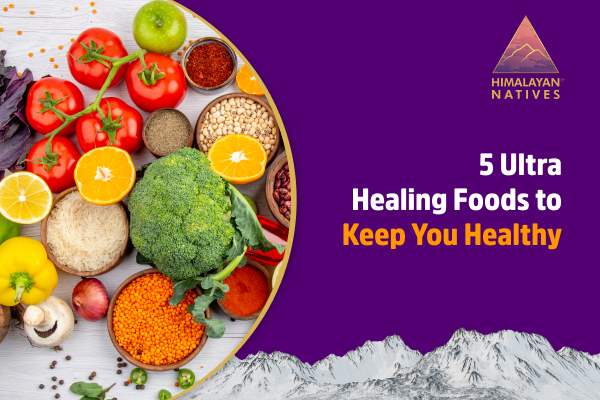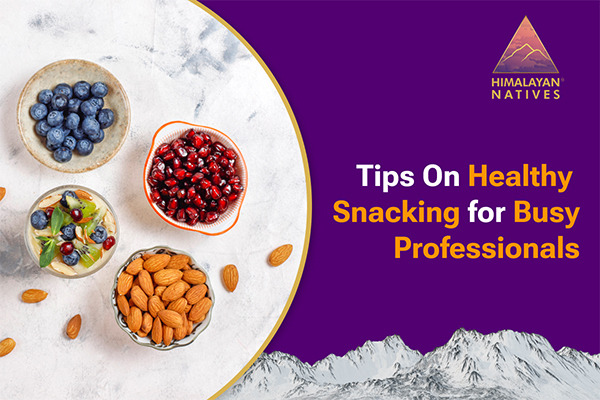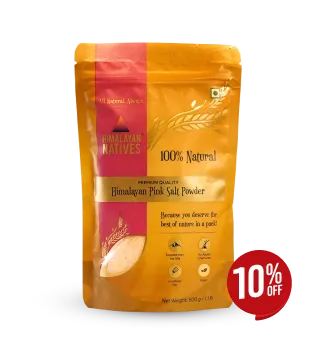
In recent years, intermittent fasting has been widely known as a leading health trend for its potential to enhance metabolism and improve overall well-being. While fasting offers various benefits on its own, the quality of the foods consumed during eating intervals amplifies the results.
This is where the superfoods to include in your diet come into action. By involving nutrient-dense options in your meals, you can sustain energy levels, support metabolic health, and boost the long-term effects of your fasting routine.
In this blog, we’ll talk about intermittent fasting, and its benefits and highlight the top superfoods that can fuel your body for the best results.
Understanding Intermittent Fasting
Intermittent fasting is becoming a lifestyle that focuses on when you eat rather than what you eat. In simpler terms, intermittent fasting involves alternating periods of eating and fasting. There is the 16/8 method, where you fast for 16 hours and eat during an 8-hour window. Additionally, there is the 5:2 method, where you eat normally for 5 days and restrict calories for 2 days.
Beyond its popularity for weight management, intermittent fasting offers a range of health benefits.
The Benefits of Intermittent Fasting
Weight Loss: One of the key benefits of intermittent fasting is its potential for weight loss. Limiting your eating time prompts your body to use stored fat for fuel, making it a powerful weight loss tool.
Metabolism rate: Intermittent fasting can improve metabolism, promoting fat-burning when you're not eating.
Cellular Repair: Time-restricted eating supports cellular repair, helping the body remove deficient proteins and regenerate cells, boosting overall health and longevity.
Mental Clarity: Fasting is linked to improved mental clarity by stabilizing insulin levels and reducing inflammation.
Cognitive Focus: Many individuals experience better focus and cognitive function during fasting windows.
Why Superfoods are Essential During Fasting

While scheduled fasting has gained attention for its health benefits, in order to maximize these benefits it's essential to include superfoods like berries, ghee, and avocados in your diet. These nutrient-dense foods help fill nutritional gaps, ensuring your body gets the necessary vitamins, minerals, and antioxidants during the limited eating intervals.
Additionally, since fasting can temporarily deprive the body of nutrients, adding the best superfoods to your diet will support overall health and boost energy levels post-fast.
Benefits of Integrating Superfoods in Fasting:
Sustained Energy: Superfoods help stabilize blood sugar, preventing energy crashes.
Boosting Metabolism: Certain foods, like green tea, improve metabolic rates.
Fat Burning: Healthy fats, such as those in avocados, enhance fat utilization.
Detoxification: Nutrient-rich foods aid in eliminating toxins during fasting.
Top 7 Superfoods for Your Intermittent Fasting Plan

1. Chia Seeds: Tiny Powerhouses of Nutrition
Rich in fibre, chia seeds help with digestion and keep you feeling fuller for longer.
They contain omega-3 fatty acids and antioxidants, maintaining brain and heart health.
You can add chia seeds to smoothies, salads, or drinks after your fasting period.
2. Avocados: Healthy Fats for Satiety
Avocados are high in monounsaturated fats that provide sustained energy and help satiate hunger.
Rich in potassium, avocados help in maintaining electrolyte balance.
You can enjoy them with salads or as a spread on healthy toast.
3. Green Tea: Boosts Metabolism and Fat Burning
Green tea is packed with catechins and caffeine, which improve fat-burning and boost metabolic rates.
It promotes fat loss, particularly during fasting periods.
You can sip on green tea during fasting windows to maximize its benefits.
4. Nuts and Seeds: Nutrient-Dense Snack Options
Almonds, walnuts, and flax seeds are good examples of dry fruits & nuts that are rich in healthy fats, fibre, and protein, helping reduce hunger pangs.
You can eat them as snacks or blend them into meals for added nutrition.
5. Berries: Low-Sugar Antioxidant Powerhouses
Berries like blueberries, strawberries, and raspberries are rich in vitamins and antioxidants while being low in sugar.
They are perfect for breaking a fast without causing a sudden spike in blood sugar levels.
You can include these berries in your post-fast meal for a nutritious boost.
6. Leafy Greens: Nutrient-Rich, Low-Calorie Vegetables
Spinach, kale, and arugula are high in vitamins and minerals but low in calories, making them ideal for a post-fast meal.
You can add them to smoothies or salads to maximize their benefits.
7. Cow Ghee: Fat-Fueled Energy
Cow ghee contains medium-chain triglycerides (MCTs), which provide quick energy and support fat burning.
You can add ghee to drinks like coffee or use it in cooking after fasting.
These superfoods help fill nutritional gaps, sustain energy levels, and boost metabolism.
How to Effectively Incorporate Superfoods Into Your Fasting Plan

Incorporating superfoods into your fasting plan can take your nutritional intake to the next level and add to the benefits of your meal plan. Here’s how you can effectively add these nutrient-dense foods into your fasting routine while maximizing their potential.
1. Timing is Everything
Superfoods like chia seeds, kale, and quinoa are nutrient-rich, providing sustained energy during fasting intervals. Be sure to incorporate these foods during your eating periods to help manage hunger effectively.
Pre-Fast Meal: Start with a nutrient-dense meal that includes superfoods like avocados or berries, which provide healthy fats and antioxidants.
During Eating Windows: Incorporate the best superfoods into salads or smoothies. For example, a spinach smoothie with banana and flax seeds can be both filling and nutritious.
2. Smart Meal Planning
Creating a consistent meal plan for intermittent fasting is essential to maintaining nutrition levels and achieving results. Effective meal planning is needed to make sure you’re not overeating while still benefiting from essential nutrients. Below are some methods that you can consider to avoid overeating:
Portion Control: Measure out your superfoods to include in your diet to avoid excessive intake. For example, a quarter cup of nuts or a tablespoon of seeds can provide a good amount of nutrients within the calorie bracket.
Balanced Meals: Make balanced meals that mix superfoods with lean proteins and healthy fats. A bowl featuring brown rice, black beans, and roasted vegetables not only tastes great but also helps your nutrition intake.
3. Hydration Matters
Staying hydrated is essential during your intermittent fasting. Water helps with digestion and can help settle unnecessary cravings. Consider infusing your water with lemon or cucumber for added flavor and antioxidants.
4. Avoid Processed Foods
To reap the benefits of your intermittent fasting, avoid processed foods during your eating intervals. These foods can lead to inflammation and blood sugar spikes, counteracting the advantages of fasting. Instead, choose whole, unprocessed foods rich in nutrients, such as:
Leafy greens
Whole grains
Fresh fruits
Nuts and seeds
By focusing on the superfoods and your eating habits, you can boost your intermittent fasting schedule and achieve your health goals.
Conclusion
By choosing the best superfoods to include in your diet, you not only fuel your body with essential nutrients but also improve your energy levels and metabolic health. This synergy between fasting and nutrient-rich foods secures your weight loss in a sustainable and health-conscious way.
When done correctly, weight loss with intermittent fasting becomes much more than a temporary phenomenon. It improves your overall health and well-being, leaving you energized and thriving every step of the way.
By focusing on the right foods during your fasting periods, you can attain the full potential of this powerful lifestyle. You can begin your health journey with natural honey and seeds from Himalayan Natives. These are packed with antioxidants.
Ultimately, it’s not just about when you eat, but what you eat that truly makes the difference.
For more such content, keep in touch with us through Instagram and Facebook.
Frequently Asked Questions (FAQs):
1. What is the rule of intermittent fasting?
Answer: Intermittent fasting involves going between periods of eating and fasting. The most common method is the 16:8, where you fast for 16 hours and eat during an 8-hour interval.
2. What is best to eat after a fast?
Answer: After a fast, it's best to eat nutrient-dense foods like lean protein, healthy fats, and fibre-rich vegetables to restore energy and support digestion.
3. What is the best first meal for intermittent fasting?
Answer: A balanced first meal could include proteins like chia seeds, fats like cow ghee, nuts and seeds, and fibre from vegetables or whole grains to fuel your body post-fast.
4. What foods keep you full during intermittent fasting?
Answer: High-fibre foods, healthy fats, and protein-rich options like nuts, seeds, avocados, and berries can keep you satiated during fasting periods.
5. How should a beginner start intermittent fasting?
Answer: Beginners should start with a simple method like 12:12 (fast for 12 hours, eat during a 12-hour window), then gradually increase the fasting duration as their body adjusts.
 HELPFUL0 people found it helpful
HELPFUL0 people found it helpful
Related Blogs
Subscribe to Our Blogs
and never miss on the latest update!


















